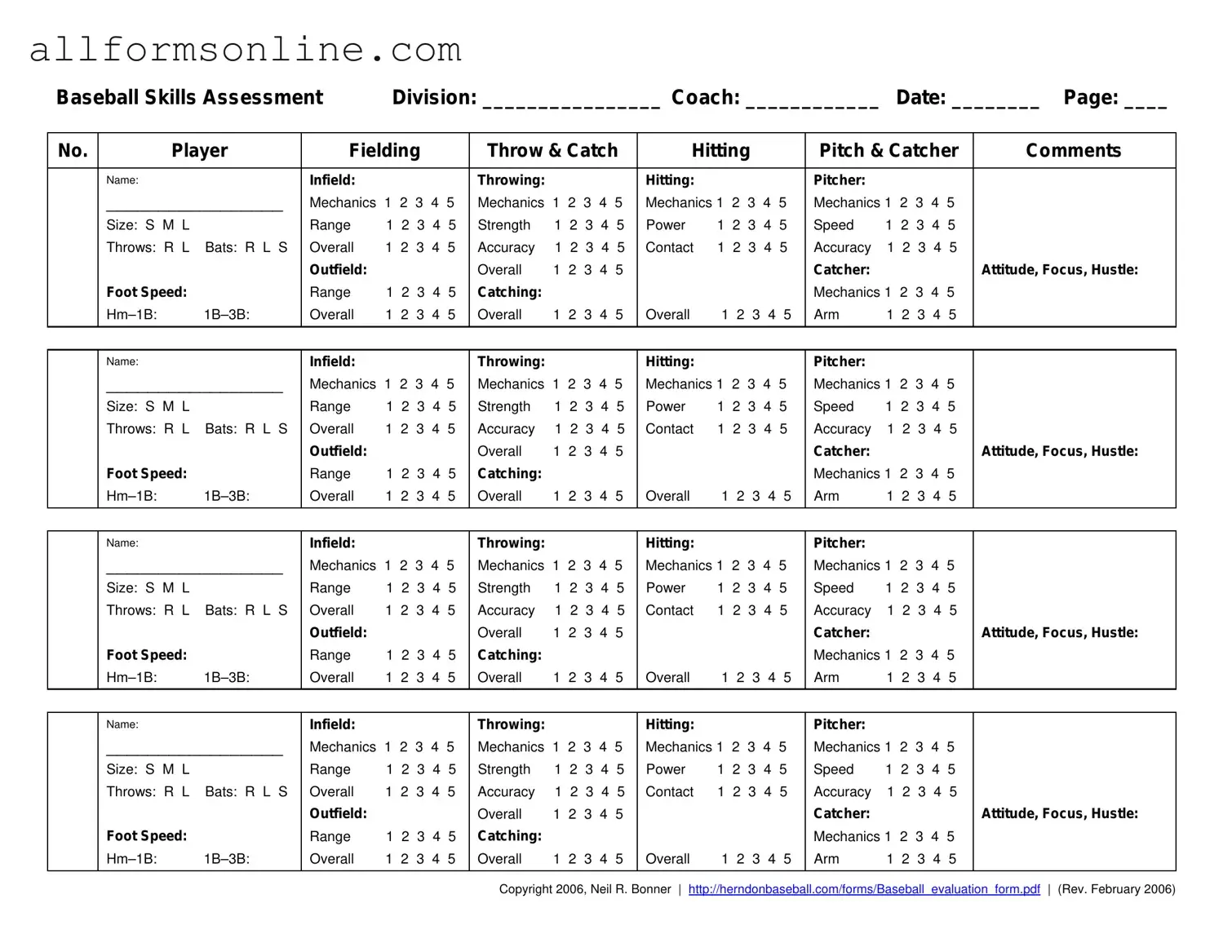What is the purpose of the Baseball Assessment form?
The Baseball Assessment form is designed to evaluate players' skills during tryouts. It helps coaches assess various aspects of a player's performance, including fielding, throwing, hitting, and pitching. By providing a structured way to score these skills, the form ensures a fair selection process for teams, particularly for All-Star travel teams and house leagues.
How is the scoring system structured on the assessment form?
The scoring system utilizes a five-point scale. A score of five indicates exceptional ability, while a score of one reflects poor performance. Scores of two, three, and four represent varying levels of skill in between. This scoring allows coaches to quantify each player's abilities and make informed decisions during team selections.
What categories are included in the assessment?
The assessment form covers multiple categories, including infield and outfield skills, throwing accuracy, hitting mechanics, and pitching. Each category is further broken down into specific skills, such as range, strength, power, and speed, allowing for a comprehensive evaluation of each player's capabilities.
How long do the tryouts typically last?
Tryouts are structured to last between two to two and a half hours. This timeframe allows for a thorough evaluation of each player's skills through various activities, including warm-ups, base running, infield and outfield drills, and hitting practice.
What factors may influence a player's score beyond skill performance?
Coaches can also consider a player's attitude, focus, and hustle when scoring. These traits can significantly impact a player's overall contribution to the team, so it's important for evaluators to take them into account during the assessment process.
Can the assessment form be used for purposes other than All-Star team selections?
Yes, while the form is primarily designed for All-Star team evaluations, it can also be effectively used for drafting players within house leagues. The structured format allows coaches to assess players consistently, regardless of the specific league or team context.
What should players expect after the tryouts are completed?
After the tryouts, the manager will thank all players for their participation and inform them when the team selections will be announced. Players who do not wish to try out for pitching or catching positions may be dismissed early, while those interested will have additional opportunities to showcase their skills.
